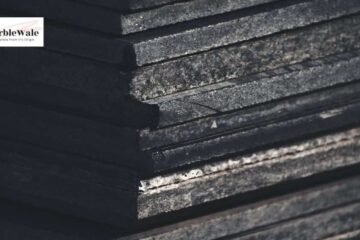Navigating the World of Japanese Kitchen Knife Sets

In the culinary world, the choice of tools can make a profound difference in the outcome of your creations, and a Japanese kitchen knife set is revered for its precision and craftsmanship. As you embark on the journey of selecting the perfect set for your kitchen, it’s essential to consider various factors that contribute to both functionality and aesthetics. In this blog, we’ll explore the key considerations when choosing a Japanese kitchen knife set, focusing on the craftsmanship that goes into creating these culinary masterpieces.
Exploring Japanese Kitchen Knife Sets: A Cut Above the Rest
Japanese kitchen knife set conjures images of blades that seamlessly glide through ingredients with unparalleled sharpness and precision. The rich tradition of Japanese knife-making, coupled with a commitment to perfection, has elevated these knife sets to the epitome of culinary artistry. They are renowned for their exceptional cutting efficiency. However, you need to find a suitable tool to get the best results in your cooking chores. By knowing the different traits of Japanese knives, you can understand which one suits your needs the best.
Craftsmanship and Tradition
At the heart of every Japanese kitchen knife set is a centuries-old tradition of craftsmanship. Japanese bladesmiths, often considered masters of their art, employ time-honored techniques passed down through generations. The meticulous process of forging, tempering, and honing results in knives that are not merely kitchen tools but expressions of cultural heritage and dedication to perfection.
Steel Composition: The Soul of the Blade
The type of steel used in crafting Japanese kitchen knives is a critical factor influencing their performance. High-carbon steel, such as VG-10 or Aogami (Blue Steel), is commonly employed. These steels not only offer exceptional sharpness but also hold their edge well, ensuring that your knives maintain their cutting prowess over time.
Classic Kitchen Knife Styles
Within a Japanese kitchen knife set, you’ll encounter a variety of styles, each designed for specific culinary tasks. One standout in the collection is the classic kitchen knife, known for its versatility and all-purpose functionality. The classic kitchen knife, often featuring a thin and sharp blade, excels at tasks like slicing, dicing, and chopping, making it an indispensable tool for chefs of all levels.
Handle Design and Comfort
While the blade is the star of the show, the handle of a Japanese kitchen knife is equally important. Traditional handles, often made from wood like Ho wood or magnolia, provide a comfortable grip and contribute to the overall balance of the knife. Some sets may feature handles made from modern materials like Pakkawood for added durability and moisture resistance.
Knife Maintenance and Sharpening
A Japanese kitchen knife set requires proper maintenance to preserve its longevity and cutting performance. Traditional Japanese knives may need more frequent sharpening, and honing tools like whetstones play a crucial role in maintaining the razor-sharp edge. Understanding the sharpening requirements of your chosen set is essential for keeping your knives in optimal condition.
Whether you are a professional chef or an aspiring home cook, investing in a Japanese kitchen knife set is an ode to the pursuit of culinary excellence. Embrace the tradition, savor the precision, and let the artistry of Japanese knife-making elevate your culinary adventures. The Japanese kitchen knife set is not just a descriptor; it’s an invitation to immerse yourself in a world where every cut is a testament to centuries-old craftsmanship and an enduring passion for culinary perfection.
Conclusion
In the world of culinary craftsmanship, the Japanese kitchen knife set encapsulates a commitment to precision, tradition, and artistry. As you navigate the selection process, understanding the key considerations becomes paramount, ensuring that your chosen set aligns with both your culinary needs and aesthetic preferences.
Leave a reply
You must be logged in to post a comment.









